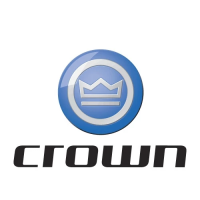337
M7.5-18.0-005
08 Rev. 7/07
LIFTING MECHANISM
Lift Chains
Never steam clean or degrease new chains. The man-
ufacturer's grease is effective in reducing wear and
corrosion. If the original factory lube is dried out or
wiped off, soak the new chain in heavy engine oil for at
least 0.5 hour prior to installing on truck.
After the existing chains have been removed from the
mast, very carefully inspect chain anchors and
sheaves. Broken, cracked, or worn anchors must be
replaced. Replace worn sheaves, and check sheave
bearings for wear. Do not paint the replacement chain
before or after it has been installed. Paint will help pre-
vent corrosion, but will prevent oil from reaching the pin
surface for good joint lubrication.
Install the new chains, using new anchor pins. Existing
pins may contain invisible fatigue cracks that could
lead to pin failure. After chains have been connected to
the anchors, adjust chain tension to obtain proper fork
or platform height.
Correct chain installation and mast adjustment will in-
crease chain service life.
Chain Anchors and Pulleys
An inspection of the chain system should include a
close examination of chain anchors, anchor tension
devices and pulleys.
Check chain anchors for wear, breakage, and radial
misalignment. Anchors with worn or broken fingers
should be replaced. Anchors should be adjusted to
eliminate twisting or other misalignment in the chain.
When chain is misaligned, the load is not distributed
uniformly between the plates-prolonged operation will
result in premature fatigue failure.
Pulleys with badly worn flanges and outside diameter
should be replaced. Heavy flange wear indicates chain
misalignment. Investigate cause by checking chain
tension and mast shimming.
Leaf Chain Disconnect
To minimize the risk of damaging (cracking, etc.) the
chain, refer to the following when disconnecting leaf
chain.
Tools Required:
1. A sturdy work surface with an opening slightly
greater than the pin diameter, and should be thick
enough to allow the pin to extend beneath the work
surface as it is driven through the bottom pin link
plate.
2. A support ring (flatwasher) with an inside diameter
slightly greater than the pin diameter and a height
equal to the head height of the pin.
3. Grinding wheel.
4. Pin punch with a diameter slightly less than the pin
diameter, hammer or pressing equipment.
Disconnect Procedures:
(Refer to Figure 16851)
1. Grind the top head of the pin flush with the pin link
plate. Be careful not to grind or damage the pin link
plate.
2. Position the support ring over opening of the work
surface. The support ring serves to support the
bottom pin link plate and avoids damage to chain
components while driving the pin through the
chain.
3. Stand the chain on its side and seat pin in the sup-
port ring.
4. Remove the pin from the chain through the top pin
link plate.
Figure 16851
(1)
Support Ring
(2)
Grind Pin Flush with Link Plate
(3)
Grinding Wheel
(4)
Pin Link Plate
(5)
Work Surface Knock Out Aperture
Crown 1984 PF5856-5 Rev. 7/07

